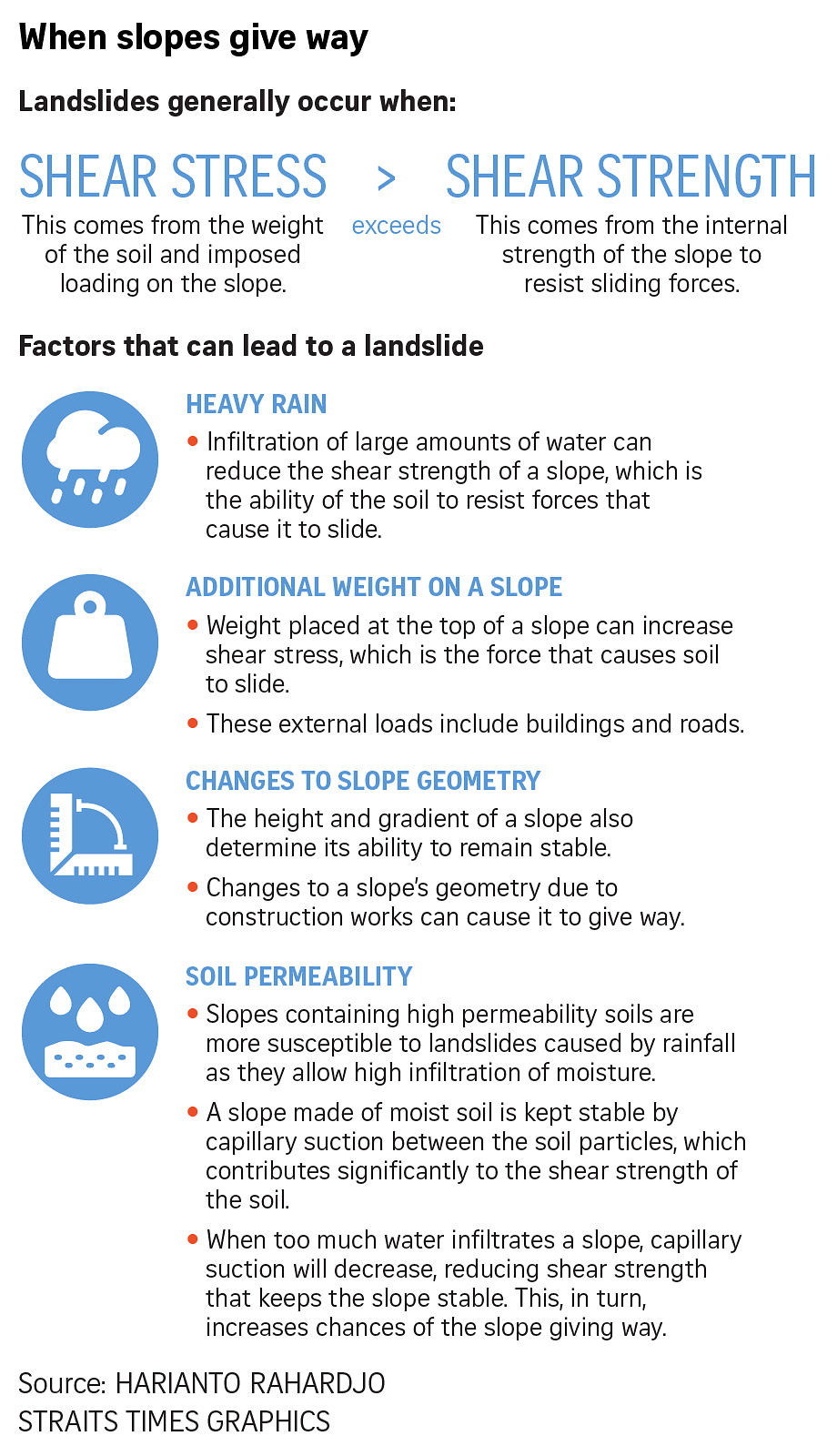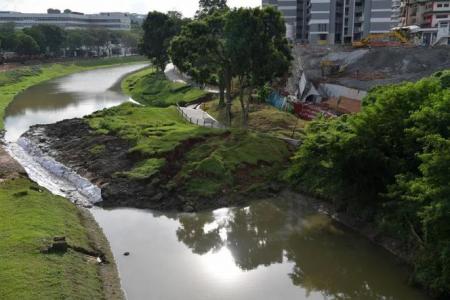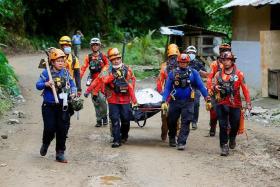Landslides explained: What causes them and will there be more?
The factors that contributed to a landslide at the Housing Board's Clementi NorthArc Build-To-Order (BTO) site recently are being investigated.
Engineering experts told The Straits Times that such incidents in Singapore are commonly caused by heavy rain, adding that with more frequent bouts of intense rainfall projected, more landslides may occur.
Here, they explain how landslides happen and whether parts of Singapore are more prone to these incidents.
Q: What causes landslides in Singapore?
A: Landslides occur when the sliding force of a slope, which comes from the weight of its soil and load imposed on the slope, exceeds the internal strength of the soil in the slope that resists these forces.
Professor of Civil and Environmental Engineering Harianto Rahardjo from Nanyang Technological University said various factors can contribute to landslides.
One example is additional weights placed at the top of a slope or heavy rain infiltrating the soil, said Prof Rahardjo, who helms the university's research on unsaturated soil mechanics.
As Singapore is located next to the equator, where rainfall is abundant, frequent and intense downpours are the most common causes of landslides here, said Associate Professor Darren Chian from the National University of Singapore's Department of Civil and Environmental Engineering.
With Singapore's relatively flat topography, he said, landslides are smaller in scale, less damaging and generally less common here than in other countries in the region.
Prof Rahardjo said rain-induced landslides occur when large amounts of water infiltrate the slope's soil and reduce its ability to resist sliding forces.
In 2019, engineers from Surbana Jurong Consultants studied the relationship between rainfall and 430 reported landslides here.
They found that there is a risk of landslides when daily rainfall in Singapore exceeds 189mm.
The engineers also found that rainfall of 100 hours or longer, with an average intensity of 5mm an hour, can trigger landslides in Singapore.
In January 2021, heavy rain caused landslides in Outram and along Loyang Avenue, with the national water agency PUB reporting that 184.4mm of rainfall had fallen in Changi from midnight to noon on the day of the incident.
Q: Are parts of Singapore more prone to landslides?
A: No specific part of Singapore is more prone to landslides, said Prof Chian and Prof Rahardjo.
In addition to the variable nature of ground conditions across Singapore, there is the practice of topping up land in an area with soil from elsewhere.
This adds to the diversity of the type of soil found near the ground surface, said Prof Chian.
Landslides occasionally occur at slopes that have been altered for the construction of buildings when heavy rain causes water to accumulate beyond the slope's drainage system capacity, said Dr Teo Tee Hui.
Dr Teo, who is from the Singapore University of Technology and Design, has done work on predicting landslides in other countries.
But this is rare in Singapore as there are typically precautions in place, he added, noting that the Clementi landslide was unexpected.
In June, ST reported that the Building and Construction Authority, which oversees buildings and construction sites, had not recorded any incidents of a slope giving way in five years.
"Slopes altered for construction or natural slopes are usually checked and reinforced to prevent landslides in most cases," said Dr Teo.
Q: Will the frequency of landslides increase in future?
A: "With greater intensity and frequent rainfall, occurrences of landslides are expected to rise," said Prof Chian.
This is because water has more time to gather and seep into the ground, leading to rapid reduction in shear strength of the soil that is supporting the slope against sliding, he added.
A slope made of moist soil is kept stable by capillary suction between the soil particles, or negative pore water pressure, which contributes significantly to the shear strength of the soil.
When too much water infiltrates a slope, this decreases capillary suction, decreasing the shear strength of the soil.
This, in turn, increases chances of the slope giving way.

The number of landslides across the island spiked last year as a result of intense rainfall during Singapore's second-wettest year since 1980.
The National Parks Board told ST in June this year that cases of a slope giving way in spaces managed by the statutory board jumped from one in 2020 to 20 last year - the highest in five years.
It noted that the increase could have been due to the abnormally high rainfall in 2021, which was nearly 70 per cent more than in the previous year.
Get The New Paper on your phone with the free TNP app. Download from the Apple App Store or Google Play Store now


